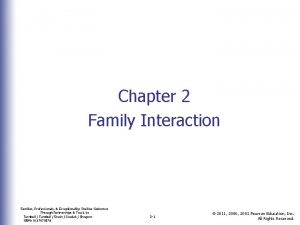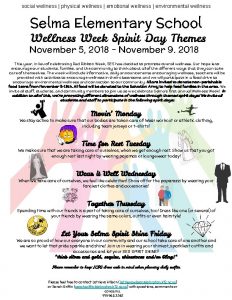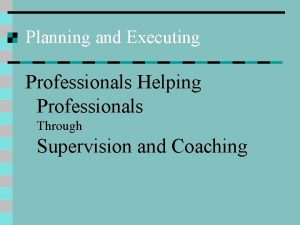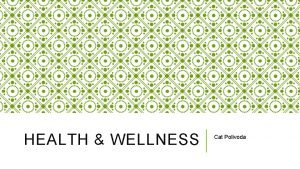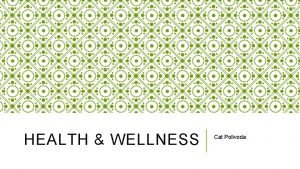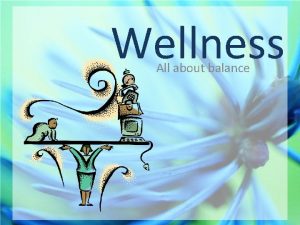Secondary Trauma and Wellness for Helping Professionals Kathy














- Slides: 14

Secondary Trauma and Wellness for Helping Professionals Kathy Hagen & Heather Daley Comprehensive Life Resources May 2016

“Deep connection is the antidote to madness” Stefan Molyneux What is to give light, must endure burning. ” Viktor Frankl “

What is Secondary Traumatic Stress? Vicarious trauma refers to changes in the inner experience of the counselor resulting from empathic engagement with a traumatized client. It is a theoretical term that focuses not only on trauma symptoms, but more often on covert cognitive changes that occur following cumulative exposure to another person’s traumatic material • Symptoms may mimic those of post-traumatic stress disorder (PTSD). • Secondary Trauma may also be referred to Vicarious Trauma. Other concerns, such as burn-out or compassion fatigue are similar but not interchangeable. • Empirical studies support theory that counselors who work with the trauma of others have an increased likelihood of experiencing a change in their own psychological functioning (Chrestman, 1995).

Common symptoms and warning signs of secondary trauma • intrusive thoughts and images related to the client’s disclosures • avoidant responses (skipping work, avoiding clients, feeling no one will understand if you talk about work) • somatic complaints (no appetite, trouble falling or staying asleep, stomach aches) • cognitive impacts (poor concentration, second guessing decisions) • distressing emotions (sadness, anger, irritable, hopelessness) • addictive or compulsive behaviors that impact your ability to do your job effectively

What is Compassion Fatigue? - Charles Figley -A gradual desensitization to client stories. May impact overall empathy and ability to connect with loved ones and friends. Also be called “Secondary Traumatization” or “Vicarious Trauma” -Reducing compassion fatigue means not fighting the symptoms but working with feelings which occur during and after the interactions with the traumatized patient • Events or situation that causes one to experience an unusually strong reaction • Often overpowers one’s usual coping mechanisms

What is Burnout? First coined by Freudenberger (1975), burnout has three components: 1. Emotional exhaustion 2. Depersonalization (loss of ones empathy, caring, and compassion) 3. A decreased sense of accomplishment. While it is also work-related, burnout develops as a result of general occupational stress; the term is not used to describe the effects of indirect trauma exposure specifically.

Compassion Satisfaction The positive feelings experienced from competent performance as a helping professional. It is characterized by positive relationships with colleagues, and the conviction that one’s work makes a meaningful contribution to clients and society.

Key Factors in Secondary Trauma Its development may be a gradual process and falls on a continuum. The line between distress and impairment may only be seen in the rearview mirror. We will all experience some form of distress-related problems with professional distress some point(s) in our lives and careers. This work changes you as a person. Each life and career stage and transition brings with them their own unique challenges and stressors. Considering where you are in your life and career at present and developing a plan to proactively address the most commonly occurring challenges will assist you to engage more in prevention activities.

Life Pie Exercise On a blank piece of paper, draw a large circle to represent your life. 1. Place a smaller circle in the center to represent you, and label it with your name. 2. Thinking of your life as a pie, divide the slices and label them to show the various activities that you are engaged in on a regular basis. Some suggested areas include: • Self Care • Work • Intimate Partner/Family • Friends/Social Life • Financial Aspects • Health & Wellness/Body Image • Spiritual Aspects • Community/Service

Self Care Mother Teresa wrote in her plan to her superiors that it was MANDATORY for her nuns to take an entire year off from their duties every 4 -5 years to allow them to heal from the effects of their care-giving work. Exposure to stressors is not necessarily a guarantee that we will develop clinically significant symptoms related to secondary trauma. Job satisfaction and personal gratification protect us (the notion that we love what we do, even if it’s very rough some days). We urge our clients to engage in protective, self care tasks, why are we different?

Prevention – the ABC Method Awareness What types of cases contribute to your stress level increasing your vulnerability to compassion fatigue? Psychoeducation Clinical supervision Balance Creation of a balanced caseload Exercise and good nutrition Flextime scheduling, use your vacation time Connection Self-care groups/therapy (for example, yoga or meditation) Ongoing skills training Colleague, friend, family or therapist you can talk with about what you are experiencing and get honest feedback. To be resilient you need to have good support and connections with others.

Integrate Self-Care into Your Daily Routine (Barnett and Sarnel, 2003) Make adequate time for yourself. Schedule breaks throughout the day. Do things you enjoy. Engage in hobbies. Take care of yourself physically and spiritually. Take care of the relationships in your life. Say NO! Don’t isolate yourself. Keep in mind that self-care is a good thing. Watch out for warning signs, such as violating boundaries, selfmedicating, wishing patients would not show up, finding it difficult to focus on the task at hand, boredom, fatigue, and/or missing appointments.

Self-care cont…. . Watch out for distress, burnout, and competence problems in your colleagues. Conduct periodic distress and competence self-assessments and seek help when it is needed. Focus on prevention. Make time for self-care! Seek out personal psychotherapy. Use colleague assistance programs. Participate in peer support groups. Accept that you’re human, in need of assistance, and a work in progress. Don’t try to be perfect, to have it all, or to do it all. Know your limits and be realistic.

Questions and Thoughts
 Certified clinical trauma professional
Certified clinical trauma professional Action verbs past present future tense
Action verbs past present future tense Never let me go chapter 10
Never let me go chapter 10 Amway vs isagenix
Amway vs isagenix Competitive intelligence professional certification
Competitive intelligence professional certification Nutrition for foodservice and culinary professionals
Nutrition for foodservice and culinary professionals Families professionals and exceptionality
Families professionals and exceptionality Ctip for acquisition and contracting professionals
Ctip for acquisition and contracting professionals Nutrition for foodservice and culinary professionals
Nutrition for foodservice and culinary professionals Nutrition for foodservice and culinary professionals
Nutrition for foodservice and culinary professionals Families professionals and exceptionality
Families professionals and exceptionality Kontinuitetshantering
Kontinuitetshantering Typiska drag för en novell
Typiska drag för en novell Tack för att ni lyssnade bild
Tack för att ni lyssnade bild Ekologiskt fotavtryck
Ekologiskt fotavtryck






